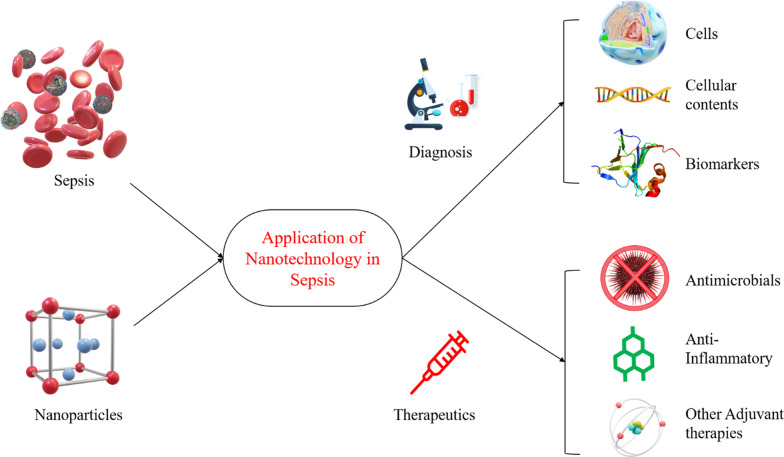- Record: found
- Abstract: found
- Article: found
Advances in sepsis diagnosis and management: a paradigm shift towards nanotechnology

Read this article at
Abstract
Sepsis, a dysregulated immune response due to life-threatening organ dysfunction, caused by drug-resistant pathogens, is a major global health threat contributing to high disease burden. Clinical outcomes in sepsis depend on timely diagnosis and appropriate early therapeutic intervention. There is a growing interest in the evaluation of nanotechnology-based solutions for sepsis management due to the inherent and unique properties of these nano-sized systems. This review presents recent advancements in nanotechnology-based solutions for sepsis diagnosis and management. Development of nanosensors based on electrochemical, immunological or magnetic principals provide highly sensitive, selective and rapid detection of sepsis biomarkers such as procalcitonin and C-reactive protein and are reviewed extensively. Nanoparticle-based drug delivery of antibiotics in sepsis models have shown promising results in combating drug resistance. Surface functionalization with antimicrobial peptides further enhances efficacy by targeting pathogens or specific microenvironments. Various strategies in nanoformulations have demonstrated the ability to deliver antibiotics and anti-inflammatory agents, simultaneously, have been reviewed. The critical role of nanoformulations of other adjuvant therapies including antioxidant, antitoxins and extracorporeal blood purification in sepsis management are also highlighted. Nanodiagnostics and nanotherapeutics in sepsis have enormous potential and provide new perspectives in sepsis management, supported by promising future biomedical applications included in the review.

Related collections
Most cited references141
- Record: found
- Abstract: found
- Article: found
The Third International Consensus Definitions for Sepsis and Septic Shock (Sepsis-3).

- Record: found
- Abstract: found
- Article: found
Cardiovascular Implications of Fatal Outcomes of Patients With Coronavirus Disease 2019 (COVID-19)

- Record: found
- Abstract: found
- Article: found